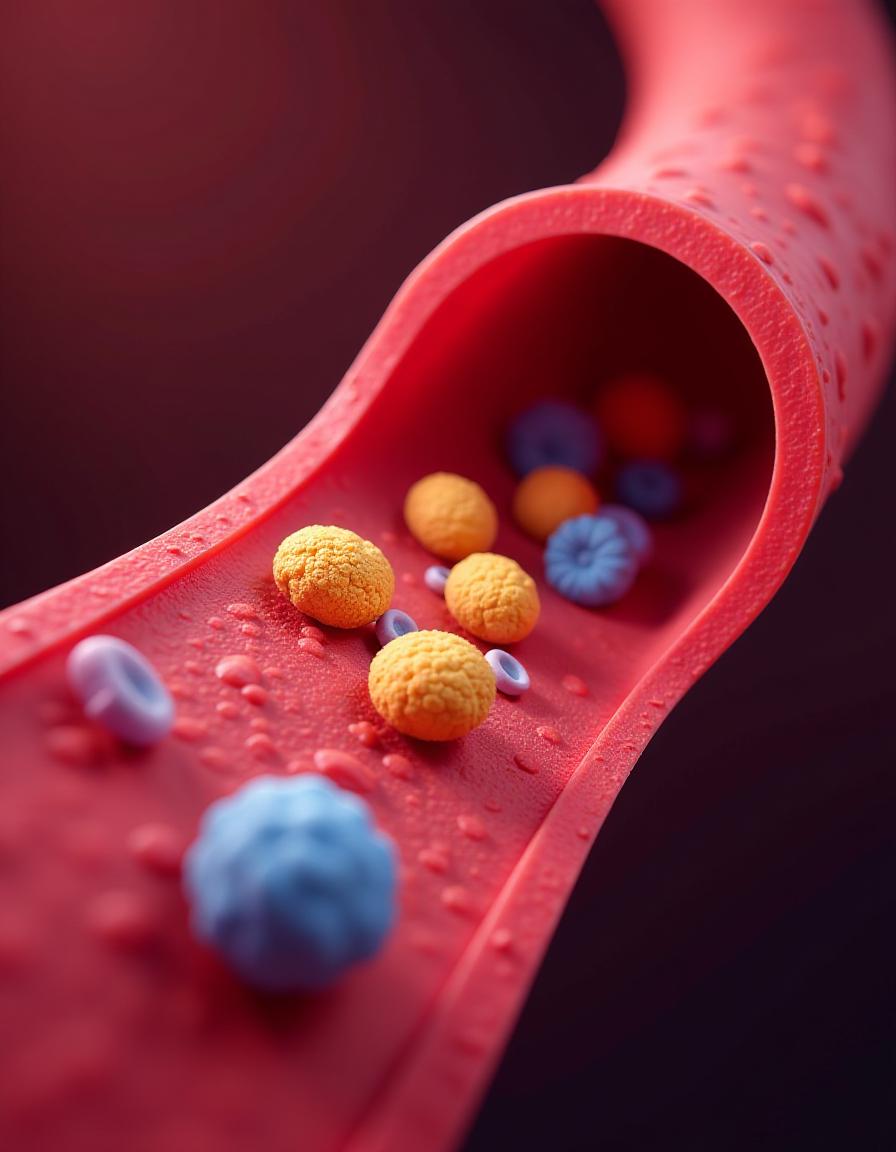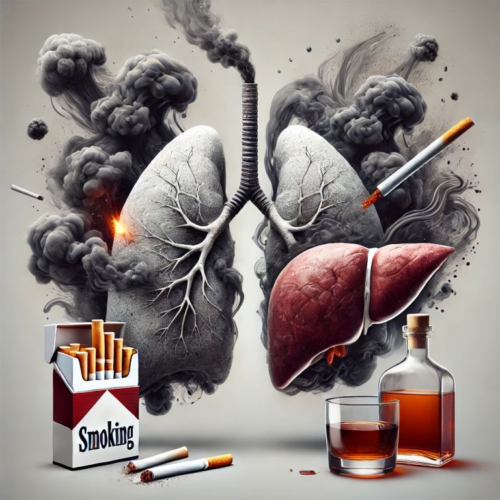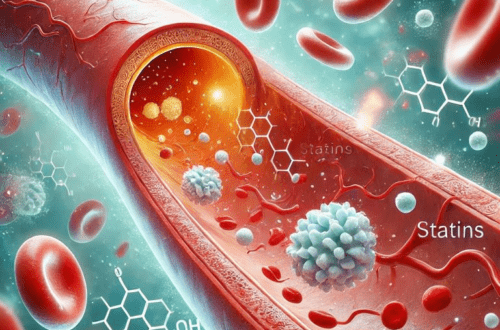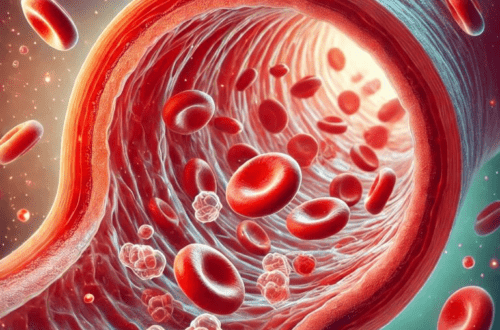Cholesterol, an active chemical compound, plays a vital role in a living being’s heart and overall health.
In its physical form, it is a waxy substance found in all animal tissues and blood plasma. Chemically, it is an organic compound belonging to the steroid family and aids the synthesis of vitamin D and steroid hormones, including progesterone, estrogens, and testosterone.
Cholesterol is a major structural component of the cell membrane, helping to maintain its fluidity and elasticity. It is also a lipid—a fat that doesn’t dissolve in water and binds with protein to travel through the blood to reach different body parts.
While cholesterol serves as a crucial cell-supporting chemical, excessive levels pose a serious threat to heart health.
How is Cholesterol Produced in Your Body?
Your liver produces most cholesterol; the remaining 20% comes from food intake.
The liver produces cholesterol during the processing and storage of nutrients. It uses raw materials like fat, sugars, and proteins for this. Additionally, the liver produces cholesterol in the insulin response, released during sugar intake.
Consuming too many foods high in saturated and trans fats increases your cholesterol level. These include red meat, processed meats, full-fat dairy, baked goods and sweets, fried foods, and tropical oils such as palm and coconut.
Functions of Cholesterol
- Ensures cell membranes’ structural integrity and fluidity by forming protective layers around them
- Helps the body produce estrogen, testosterone, and adrenal hormones
- Supports the body to produce vitamin D
- Aids the liver in producing bile acids, essential for digesting fats and absorbing nutrients
- Supports the efficient functioning of the body’s metabolism
Risks of High Cholesterol
When cholesterol levels are higher than normal or recommended levels, the surplus molecules combine with fatty substances and other materials to produce a sticky plaque that attaches to the artery walls, narrowing them and blocking blood flow. This condition, known as atherosclerosis, can occur in any artery in the body. However, when it happens to the coronary arteries that transfer blood to the heart muscles, it will lead to coronary artery disease (CAD), a severe heart health issue.
CAD impairs the normal blood flow to the heart and poses several serious risks, such as:
- Heart attack
- Chest pain (angina)
- Heart failure
- Arrhythmias
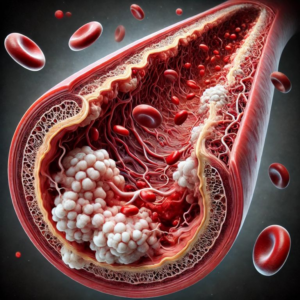
One method to avoid this risk is to follow a heart-healthy eating pattern that consumes foods that are naturally low in unhealthy fats, such as saturated and trans fats, and high in healthy fats, fiber, and omega-3 fatty acids.
Furthermore, moderate to high physical activities, abstinence from smoking and alcohol, relaxation, and close follow-up with heart health professionals in case of high cholesterol detection enable you to mitigate these risks.
Cholesterol, Lipids, and Lipoproteins
Lipids are organic compounds your body produces or acquires from food sources. Lipid molecules include fats, oils, waxes, and specific vitamins. Although insoluble in water, lipids dissolve in organic solvents, making them ideal for storing energy and providing insulation. Lipids actively support various biological functions, such as energy storage, act as the building blocks of cell membranes, and assist in hormone production.
Lipids such as triglycerides, cholesterol, and phospholipids play distinct roles in metabolism, cellular health, and other bodily functions. However, excessive cholesterol or triglycerides in the blood can be harmful and lead to conditions like atherosclerosis, which can cause clogged arteries and heart problems.
Lipoproteins are particles made up of proteins and lipids (fats) that transport cholesterol, triglycerides, and other lipids through the bloodstream to cells in the body.
Since lipids are not soluble in water, lipoproteins act as carriers that allow these fatty substances to move through the blood to various tissues and organs where they are needed or processed.
Different Types of Lipoproteins
They are HDL (high-density lipoprotein), LDL (low-density lipoprotein), and VLDL (very-low-density lipoprotein). HDL is called the “good” cholesterol, while LDL and VLDL are called “bad” cholesterols.
LDL Cholesterol
Though a vital transporter of cholesterol, higher LDL levels elevate the risk of atherosclerosis, which can lead to stroke, coronary artery disease, and peripheral arterial disease. It transports cholesterol to the cells but can lead to plaque buildup in arteries if levels are too high.
Low to moderate levels of LDL cholesterol can be beneficial to your body despite the risks associated with high levels:
- Improved blood flow and circulation
- Lower inflammation
- Low LDL levels mitigate the risk of pancreatitis
- Moderate LDL levels support brain health
- Better metabolic health
HDL Cholesterol
HDL cholesterol assists the removal of excess LDL cholesterol from the bloodstream. For this, it uses the following methods to transport the LDL to the liver for processing and disposal:
- HDL particles pick up excess LDL cholesterol from cells and tissues
- By gathering the excess cholesterol, the HDL particles become mature and float in the bloodstream
- The mature HDL particles deliver the gathered cholesterol to the liver, where they are either converted into bile or other substances
Thus, high HDL cholesterol levels are highly desired to lower heart disease and stroke risks.
VLDL Cholesterol
VLDL is a type of non-HDL cholesterol that transports triglycerides and is another type of “bad” lipoprotein. It contributes to plaque formation in arteries, increasing the risk of heart disease and stroke.
Lipoproteins are essential for maintaining the body’s balance of fats and cholesterol, but imbalances in their levels can lead to cardiovascular diseases.
Triglycerides
It is a type of fat (lipid) found in your blood that stores energy. When you eat food, the body converts it into calories. Any unused calories are converted into triglycerides and stored in fat cells.
Triglycerides differ from the lipoproteins – LDL, HDL, and VLDL – in many ways:
- Triglycerides are not water-soluble since they are fats that do not dissolve in water.
- Lipoproteins consist of complex particles of water-soluble lipids (fats) and proteins.
- Triglycerides are fats storing energy that needs to be transported through the blood.
- Lipoproteins carry cholesterol and triglycerides through the bloodstream for energy storage. While LDL and HDL cholesterols transport cholesterol, VLDL transport triglycerides to tissues through the blood.
High triglyceride levels in the blood can pose significant health risks, particularly for the heart. They cause arteries to harden and narrow, leading to heart disease, heart attacks, and strokes. Additionally, high triglyceride levels can trigger other concerns, such as high LDL (“bad cholesterol”) and low HDL (“good cholesterol”), further elevating cardiovascular risks.
Controlling Your Cholesterol
Controlling cholesterol is crucial for your health because high LDL, VLDL, and triglycerides can lead to plaque buildup in arteries. This formation can narrow and harden the arteries, inhibiting blood flow and increasing the risk of serious cardiovascular problems such as heart attacks, strokes, and coronary artery disease. High cholesterol levels can also damage blood vessels, leading to complications over time.
Maintaining healthy cholesterol levels—keeping LDL cholesterol low, triglycerides in the recommended range, and HDL cholesterol at beneficial levels—helps protect heart health, reduce the risk of cardiovascular disease, and support overall well-being. Regular monitoring, a balanced diet, exercise, and, in some cases, medications are essential in managing cholesterol.
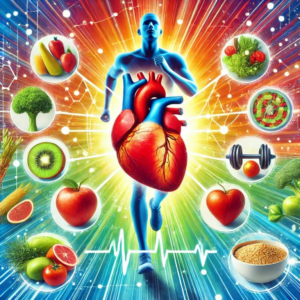
Here are some practical measures to maintain healthy cholesterol levels to avoid cardiovascular risks:
Eating a Healthy Diet
A heart-healthy diet lowers LDL (“bad”) cholesterol and triglycerides and increases HDL (“bad”) cholesterol. This diet is low in salt and saturated fat and rich in fiber, fruits, vegetables, and whole grains. Here are some diets that effectively manage cholesterol:
- A diet rich in soluble fiber (oats, fruits, vegetables, and legumes) binds the fiber to the LDL cholesterol in the digestive system, removing it as body waste.
- A diet free from saturated fats, such as red meat, butter, cheese, chocolate, coconut oil, palm oil, and full-fat dairy, helps lower LDL cholesterol.
- A diet free from trans fats, such as processed foods, fried foods, baked goods, and snack foods, helps lower LDL cholesterol.
- A diet rich in healthy fats (olive oil and avocados) and omega-3 fatty acids (fatty fish, walnuts, chia seeds, flaxseeds, and hemp seeds) helps increase HDL cholesterol, which removes excess LDL cholesterol.
- Avoiding refined sugars, processed foods, and alcohol helps reduce triglycerides. Additionally, whole grains, vegetables, and healthy fats help lower triglycerides.
- A non-healthy diet results in weight gain and obesity, which raises LDL and triglycerides and lowers HDL levels. Maintaining a healthy weight supports better cholesterol and heart health management.
Physical Activities and Maintaining a Healthy Weight
A sedentary lifestyle, as well as overweight or obesity, often leads to significant heart health issues. These include reduced HDL cholesterol generation metabolism, leading to high LDL cholesterol and elevated triglyceride levels. Regular physical activities during most days of the week, starting with low-intensity activities and gradually increasing the intensity, can make you fit and keep your heart healthy. These activities increase HDL cholesterol, reduce LDL and triglycerides, and improve heart function and circulation.
Following physical activities have proved to be effective for overall health and particularly heart health:
- Aerobic exercises: Brisk walking, running, swimming, and dancing have proved highly effective in raising HDL cholesterol and lowering LDL cholesterol and triglycerides. Aim for moderate-intensity activities, 30 minutes daily and five days a week.
- Resistance training: Strength exercises such as push-ups, squats, weightlifting, and resistance band workouts help improve muscle mass, which in turn lowers LDL cholesterol and triglycerides levels.
- Flexibility and balance exercises: Activities such as yoga, tai-chi, and stretching improve fitness and reduce stress, allowing you to perform aerobic and resistance exercises.
Abstaining from Alcohol Consumption and Smoking
Excessive alcohol consumption raises triglycerides and LDL cholesterol, leading to a higher risk of plaque formation and arterial blockages. While low to moderate alcohol intake can increase HDL levels, excessive consumption disrupts this balance by causing liver damage, increased triglycerides, metabolic disruption, and weight gain.
Smoking reduces HDL cholesterol levels, negatively affecting the removal of LDL cholesterol. At an advanced level, excessive smoking promotes LDL oxidation, which increases the probability of this “bad” cholesterol sticking to artery walls and forming plaques, leading to arterial blockages.
Alcohol and smoking addiction can be treated by:
- Gradual reduction to manage withdrawal symptoms
- Employing healthy substitutes such as physical activity, hobbies, or relaxation techniques such as meditation and prayer
- Professional help from a healthcare provider, therapist, or addiction specialist utilizing medications, counseling, or behavioral therapies to overcome addictions
- Nicotine Replacement Therapy (NRT) using nicotine patches, gums, or lozenges to overcome cravings during smoking cessation
- Smoking and drinking cessation programs utilizing a combination of NRP and behavioral therapies
- Social support programs that use a collaborative atmosphere with mutual help and motivation
Working with Your Healthcare Team
While incorporating all the lifestyle changes ensures maintaining healthy cholesterol levels, unhealthy lifestyle choices and unmonitored cholesterol levels can silently elevate your cholesterol to hazardous levels. In such cases, symptoms like difficulty breathing and palpitation might occur during stressful activities like speedy walking, running, and climbing hills and stairs. Occasionally, there might be mild to moderate chest pain and chest unease. Whether after these symptoms or before, it is advisable to consult your heart healthcare team and regularly test your lipid profile once every three months a year. They might prescribe cholesterol-lowering medications like statins or other drugs if lifestyle changes are insufficient.
They monitor your progress and offer personalized treatment plans that include physical activities, diet changes, relaxation routines, and support medications. Most cholesterol management treatment plans also address related health conditions like high blood pressure or diabetes, focusing on a holistic approach to managing cholesterol and ensuring better heart and overall health.
Final Thoughts
While maintaining healthy cholesterol levels is essential for your health and well-being, uncontrolled triglycerides, LDL, VLDL cholesterols, and lower HDL cholesterol can severely threaten your heart health. Adopting a healthy and nature-friendly lifestyle consisting of a nutritious diet, physical activities, and quitting smoking and alcohol consumption can help your body naturally use cholesterol to keep you healthy and active. Regular and early consultations with heart healthcare professionals are essential for early detection and effective management of cholesterol to maintain long-term heart health.

